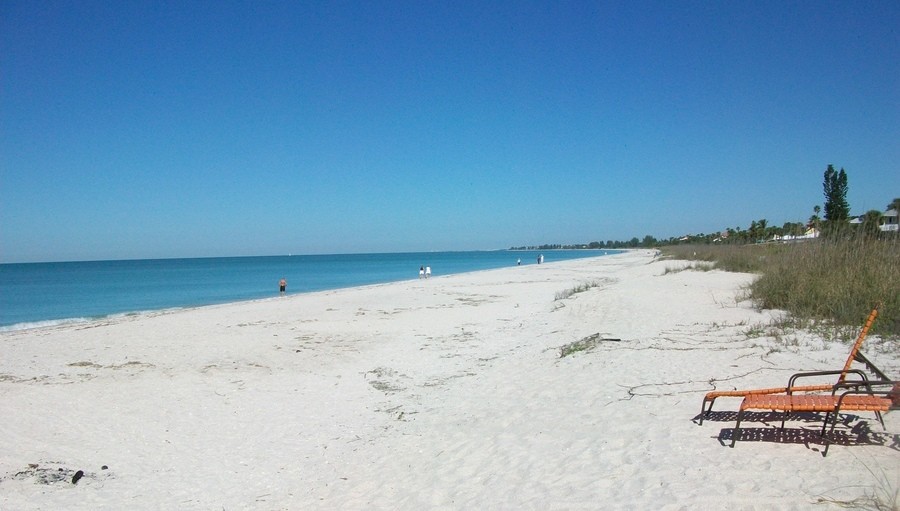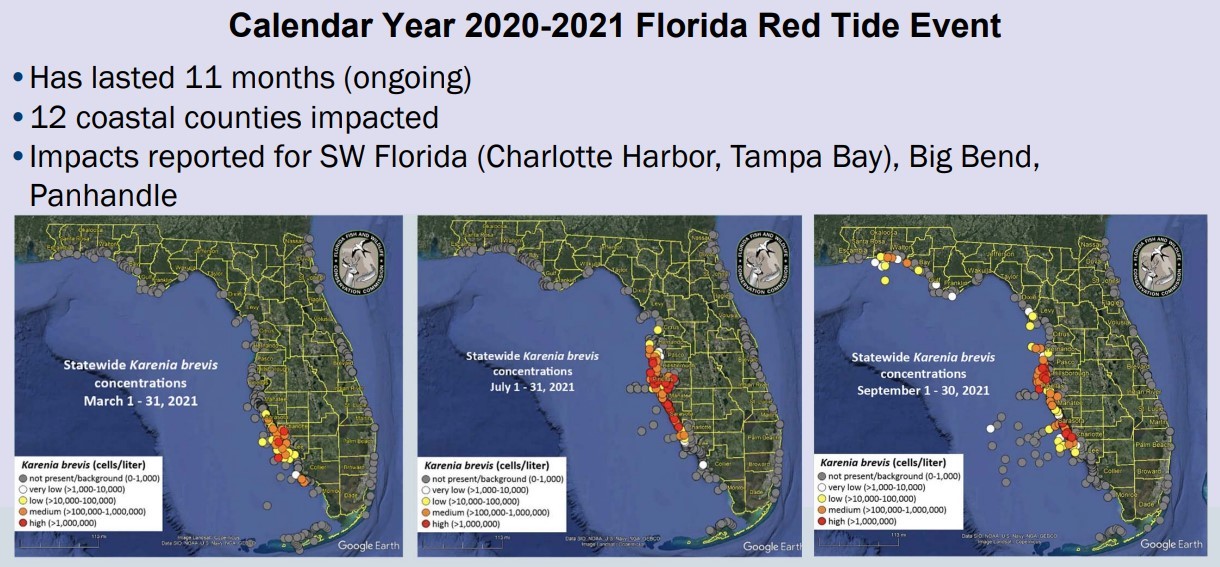Wildlife Leaders Track Red Tide On Gulf Coast
Todays News
SRQ DAILY FRESHLY SQUEEZED CONTENT EVERY MORNING
THURSDAY OCT 14, 2021 |
BY JACOB OGLES
Graphic courtesy Fish and Wildlife Research Institute
It remains unclear in the Piney Point disaster this year contributed to a red tide outbreak shortly after, according to the Fish and Wildlife Research Institute. But it didn’t help.
Institute director Gil McRae testified to the House Agriculture & Natural Resources Appropriations Subcommittee on Wednesday that drought conditions were most likely to blame for a red tide bloom that started in March. Over the course of about six months, there were reported harmful algal blooms that originated around Sarasota and Charlotte counties but would spread as far as the Panhandle and as far south as Collier County.
While the Piney Point disaster, a breach in a gypsumstack in Manatee County that prompted the release of 214 million gallons of industrial wastewater into Port Manatee, didn’t incite the blooms, McRae said it did contribute nutrients that can feed red tide.
Rep. James Buchanan, R-Venice, asked about how information about blooms can better be communicated with coastal industries, whether that includes fisherman or hoteliers. “We know from red tide events before you can have water quality one way and then a mile away the water quality can be drastically different,” Buchanan said.
McRae acknowledged as much as said while red tide can pollute the sea and air, you can sometimes find people a couple hundred yards away unimpacted and enjoying a fine day at the beach. That’s why the state updates its Protecting Florida Together with geographically specific information in as close to real time as possible.
The scientific leader noted research partners, including Mote Marine Laboratory in Sarasota, have helped improve detection of red tide tremendously over the last 20 years. But the problem is also one that can never be truly eliminated. The algae is native to the Gulf of Mexico and environmental officials don’t want to completely disrupt the balance of nature.
But through mitigation, state officials hope to limit the sort of devastating blooms that slammed the region’s tourism economy in 2018, and to a lesser degree this year. Red tides impact the beaches and infect the air residents breathe when the worst blooms occur.
They can also impact food supply, but there the state feels confident in its policing of problems. While red tide causes fish kills, and can also cause the death of larger creatures like sea turtles and manatees, it won’t kill shellfish. It can, however, build up in the filtration systems of mollusks and make them dangerous to eat.
But through strict rules about leaving shellfish in the ocean after a red tide event, McRae said that can allow time for the red tide to be completely cleaned. It’s been decades since anyone in Florida became sick from legally acquired shell fish infected by red tide. Meanwhile, the state is encouraging the farming of clams and oysters in areas at risk for blooms in hopes that the filtration helps with genera water quality.
Graphic courtesy Fish and Wildlife Research Institute
« View The Thursday Oct 14, 2021 SRQ Daily Edition
« Back To SRQ Daily Archive











